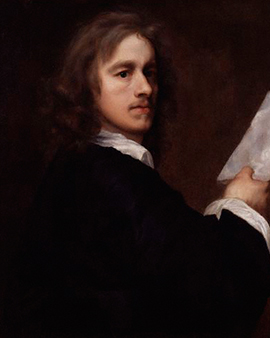Born in 1599, the work of the remarkable English portrait painter Robert Walker began, who became famous for his masterful depictions of the "Lord Protector" Oliver Cromwell and other distinguished parliamentarians of his era. Walker's art, which was clearly under the influence of van Dyck, can be admired in numerous exhibitions at the National Portrait Gallery in London. From 1649 to 1660, Walker held the prestigious position of principal painter to the Parliamentary Party during the Commonwealth of England. Details about his early years remain shrouded in the mists of history. Despite being heavily inspired by Van Dyck, his painting style is distinguished by a distinctive style that precludes direct discipleship under Van Dyck. His contributions to portraiture, however, are undeniable. Our current understanding of Cromwell's appearance is based primarily on Walker's paintings, supplemented by portraits from Samuel Cooper and Peter Lely.
Walker had the rare gift of capturing Cromwell in a wide variety of depictions, whether in full armor with a page at the sash, or in intimate portraits showing the face down to the waist. These works have been widely reproduced and imitated, so that Cromwell is firmly entrenched in our imagination. The most striking representation of the first type may be the painting now on display at the National Portrait Gallery, formerly part of the Rich family collection. In addition to his iconic work with Cromwell, Walker also left impressive portraits of other leading figures in parliamentary government, including Henry Ireton, John Lambert, Charles Fleetwood, and Richard Keble. His notable reputation as an artist also attracted diarist John Evelyn, who posed for him in 1648.
A highlight of his art is a portrait of an unknown man, now in the National Portrait Gallery, formerly incorrectly attributed to William Faithorne the Elder. In 1652, after the death of the Earl of Arundel, Walker was assigned an apartment in Arundel House, which had been requisitioned by Parliament. His artistic career came to an untimely end in 1658, but this did not diminish his cultural presence. His art lives on today in the fine art prints we offer and in the stunning portraits on display at the National Portrait Gallery and the Ashmolean Museum in Oxford.
×





_1649_-_(MeisterDrucke-260124).jpg)
_1649_-_(MeisterDrucke-260124).jpg)
 3rd Lord Fairfax - (MeisterDrucke-221184).jpg)
 3rd Lord Fairfax - (MeisterDrucke-221184).jpg)
.jpg)
.jpg)
.jpg)
.jpg)
 3rd Lord Fairfax - (MeisterDrucke-303780).jpg)
 3rd Lord Fairfax - (MeisterDrucke-303780).jpg)
_Lord_Protector_of_England_c1650_-_(MeisterDrucke-317885).jpg)
_Lord_Protector_of_England_c1650_-_(MeisterDrucke-317885).jpg)
_-_(MeisterDrucke-1011375).jpg)
_-_(MeisterDrucke-1011375).jpg)
_Peinture_de_Robert_Walker_(1599-1658)_hui_-_(MeisterDrucke-1320350).jpg)
_Peinture_de_Robert_Walker_(1599-1658)_hui_-_(MeisterDrucke-1320350).jpg)
 - (MeisterDrucke-115571).jpg)
 - (MeisterDrucke-115571).jpg)
 engraved by Willia - (MeisterDrucke-246673).jpg)
 engraved by Willia - (MeisterDrucke-246673).jpg)
.jpg)
.jpg)
.jpg)
.jpg)
_-_(MeisterDrucke-897139).jpg)
_-_(MeisterDrucke-897139).jpg)
_-_(MeisterDrucke-368600).jpg)
_-_(MeisterDrucke-368600).jpg)
_-_(MeisterDrucke-902499).jpg)
_-_(MeisterDrucke-902499).jpg)
.jpg)
.jpg)
_of_Hassop_-_(MeisterDrucke-163194).jpg)
_of_Hassop_-_(MeisterDrucke-163194).jpg)
_-_(MeisterDrucke-901773).jpg)
_-_(MeisterDrucke-901773).jpg)
.jpg)
.jpg)
_-_(MeisterDrucke-901175).jpg)
_-_(MeisterDrucke-901175).jpg)
.jpg)
.jpg)
.jpg)
.jpg)
.jpg)
.jpg)






